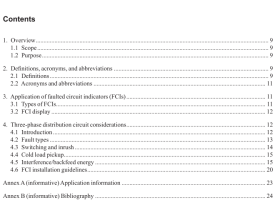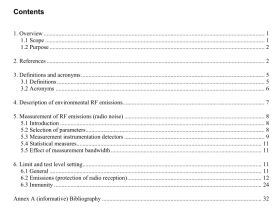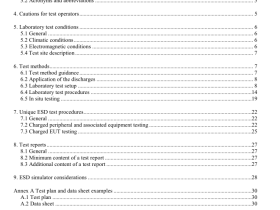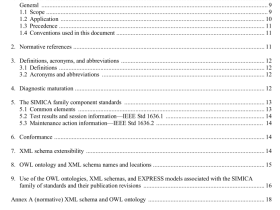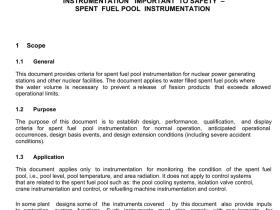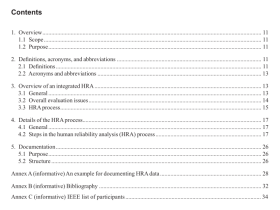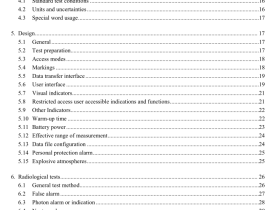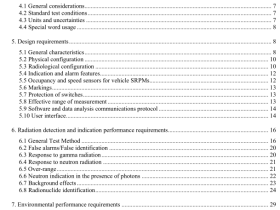IEEE Std 3006.3 pdf download
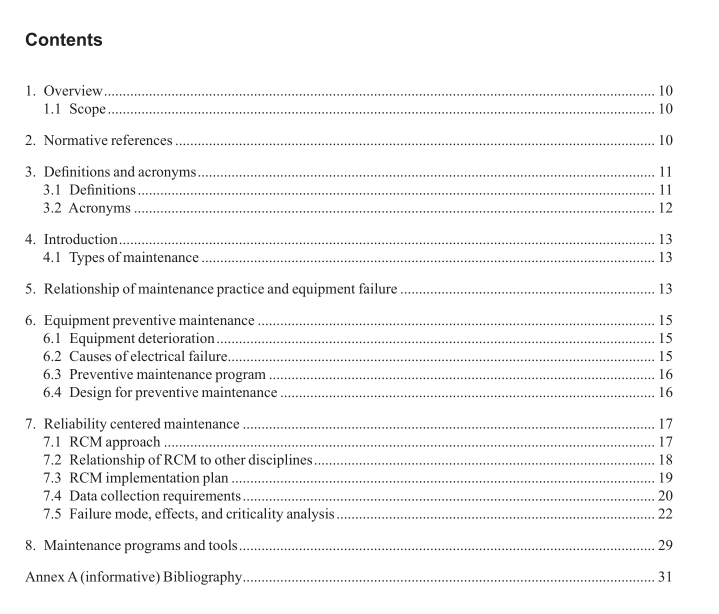
IEEE Std 3006.3 pdf download IEEE Recommended Practice for Determining the Impact of Preventative Maintenance on the Reliability of Industrial and Commercial Power Systems
4. Introduction Many electrical engineers involved in the design, installation and maintenance of industrial and commercial power systems are much more familiar with the technology of power engineering than they are with reliability engineering (including some of the authors for this standard). If you are one of the frst group and some of the defnitions in this standard are not already familiar to you, particularly how a reliability engineer defnes “reliability” and “availability,” IEEE Std 3006.5-2014 provides an overview and explanations of reliability engineering as it is applied to power distribution systems.
The objective of this recommended practice is to illustrate the important role maintenance plays in the reliability and availability of power systems in industrial plants and commercial buildings. Details of “when,” “how,” and “how often” can be obtained from other sources (see Curdts [B2], Department of Army Maintenance Technical Manual [B3], “Factory Mutual Systems Transformer Bulletin” [B8], Hubert [B11], IEEE Committee Report [B18], “Maintenance Hints” [B19], NFPA 70B-2016 [B22], Miller [B20], Shaw [B26], Smeaton [B27], IEEE Std 1242 [B16]). Of the many factors involved in reliability and availability, proper maintenance often receives meager emphasis in the design phase and operation of distribution systems when it can be a key factor in high availability.
Large expenditures for systems are made to provide the desired reliability and availability; however, failure to provide timely, high-quality maintenance leads to system or component malfunction or failure and prevents obtaining the intended design goal. Experience indicates that equipment lasts longer and performs better when covered under an efective maintenance program. An efective maintenance program can reduce accidents and operator error, and minimize costly breakdowns and unscheduled outages by identifying and solving problems early, before they become major problems. It must also be clearly understood that a maintenance program can only preserve the quality and functionality of the existing design. Installation errors may be located and corrected as part of a maintenance program and thus improve the reliability and availability of the system as it was installed. However, perfect maintenance cannot raise the reliability and availability of the system above what is inherent to the design. If there are concerns about whether or not the existing design will meet the reliability and availability required for the system operation, IEEE Std 3006.2-2016 provides guidance.
4.1 Types of maintenance IEEE Std 3007.2-2010 discusses three types of maintenance for electrical power equipment; breakdown/ corrective maintenance, preventive maintenance and predictive maintenance. The frst, breakdown/corrective maintenance is just fxing the equipment when it breaks. Nothing is done to keep the equipment from failing, or to extend the time it operates before it fails. For this standard, run to failure is considered “no maintenance” and both predictive and preventive maintenance are included when this standard discusses “preventive maintenance.” Reliability centered maintenance (RCM) is the process for determining the optimum mix of maintenance activities (corrective, predictive or preventive) to apply to the various parts of the electrical distribution system to maintain the needed reliability and availability at the minimum overall cost.
5. Relationship of maintenance practice and equipment failure The Reliability Subcommittee of the IEEE Industrial and Commercial Power Systems Committee published the results of a survey that included the efect of maintenance quality on the reliability of electrical equipment in industrial plants (see IEEE Committee Report [B18]). Each participant in the survey was asked to give his or her opinion of the maintenance quality in the plant. A major portion of the electrical equipment covered in the survey had a maintenance quality that was classed as “excellent” or “fair.” Interestingly, maintenance quality had a signifcant effect on the percentage of all failures blamed on “inadequate maintenance.”
